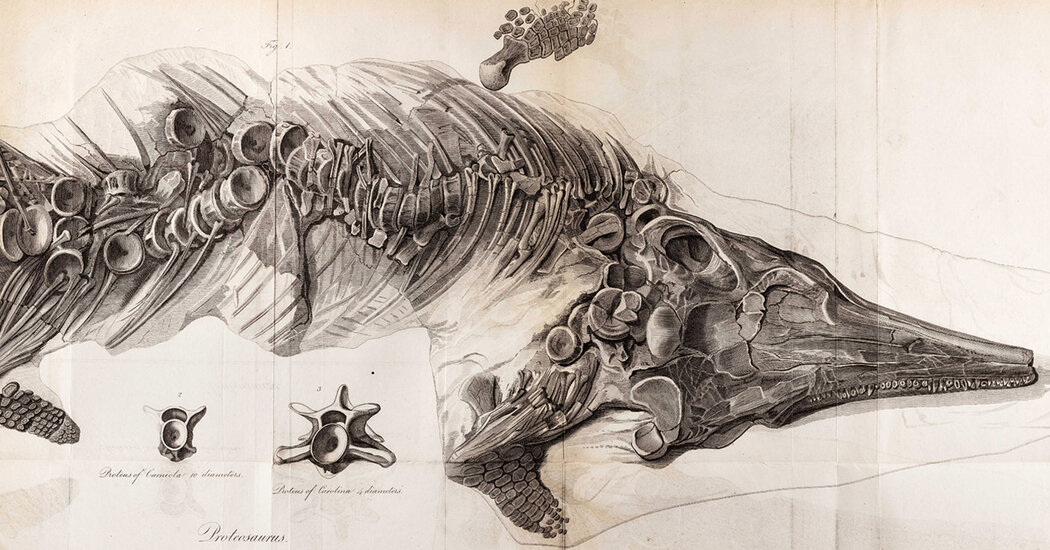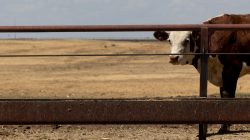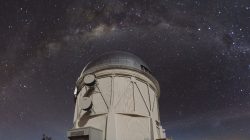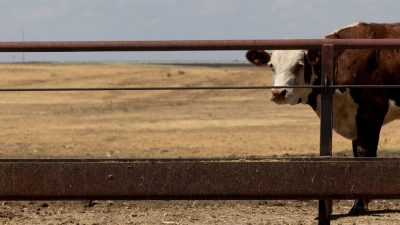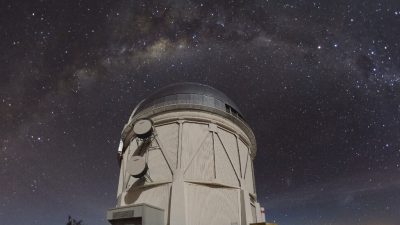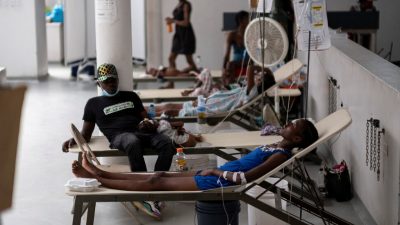“You can see the plaster underneath where it’s deteriorated over years,” Dr. Lomax said.
On a visit to the Natural History Museum in Berlin in 2019, Dr. Lomax spotted another cast of the specimen hiding on a shelf behind a display of ammonites and other fossils. “Immediately, I was like, ‘I know what that is!’” he said, recounting the incident. The cast was clearer and more defined than its Yale counterpart, suggesting that it had been made later. The bones on the cast had also been carefully painted by an unknown artist.
Although both casts’ positions matched the illustration, there were intriguing discrepancies. For instance, the illustration shows four or five tiny bones in the left forefin connecting to the reptile’s humerus, a feature yet to be seen in any of the 100 or so known species of ichthyosaurs, Dr. Lomax said. While most of the extra bones in the drawing had not appeared in the Yale cast, they had been liberally painted on the Berlin copy so that it matched the illustration, indicating that some artistic license was at play in the drawing.
These discrepancies highlight the importance of studying old casts of lost fossils over relying on illustrations, as the former are more likely to represent specimens accurately, said Erin Maxwell, a paleontologist specializing in ichthyosaurs at the Stuttgart State Museum of Natural History in Germany who was not involved in the new study.
The surprise discovery also shows the value of specialized museum curatorial staff who have the eye to spot significant specimens in forgotten drawers or overlooked shelves. “Many collections staff clearly saw these casts,” said Dr. Maxwell. “They just didn’t recognize the significance.”
Sometimes, it’s a case of finding the treasure in the trash. Three decades ago, Martin Sander, a paleontologist in Germany, rescued a broken ichthyosaur skeleton cast from being tossed in the garbage at Goldfuss Museum in Bonn. Dr. Sander, now at the University of Bonn, suspected it was a replica of a specimen lost during World War II.
Dr. Sander didn’t have an answer about the specimen’s origins until he was contacted in the past week by a reporter to comment on Dr. Lomax and Dr. Massare’s paper. Comparing the images in the study with his cast, he proposed it might be a third replica of Anning and Home’s “Proteo-saurus.”
Sumber: www.nytimes.com
